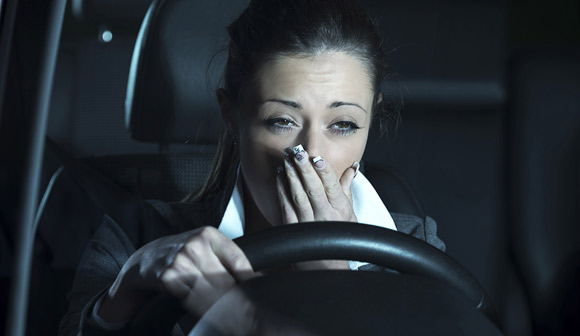Driver fatigue on the increase
17/12/2015 00:00:00by Paul Fincham17/12/2015 00:00:00Driver fatigue on the increaseBluedrop Services

Due to shifting patterns in work habits, where people are either working longer hours and commuting further or choosing to work shift patterns to fit in with family life, there has been a growing increase in accidents caused by driver fatigue.
Add onto this the effects of the winter daylight saving time change and increased dangers of weather conditions on the roads at this time of year and you are left with a lethal concoction of facts that Fleet Managers have a duty of care not to ignore.

Driver fatigue related to shift patterns
Because of the growing number of people that are now either working early in the morning or late at night, there has been a growing increase in accidents that have been caused by drivers falling asleep behind the wheel. It has been found that accidents of this nature are more likely to happen between 2am and 6am and after working long shift patterns, or after lunch.
Large percentage of accidents driver fatigue related
According to RoSPA 20% of all road accidents in the UK are sleep related and up to one quarter of fatal road accidents are caused by driver fatigue. Crashes resulting from fatigued drivers are also found to be 50% more likely to result in death or serious injury and tend to be at high speed where the driver fails to brake or swerve to reduce impact.
Think!, the governments Department for Transport’s road safety project, also state that 40% of sleep-related accidents involve commercial vehicles where employees are more likely to be spending more hours on the road.
The rising trend is echoed across the pond
A new campaign was even launched by Transport Scotland in June this year to reduce the number of accidents caused by driver fatigue (107 cases in 2013). The increase in driver fatigue related accidents has also been echoed in the US where the National Highway Safety Administration (NHTSA) has found over 100,000 crashes per year are now attributed to driver fatigue. Similarly the AAA Foundation cited 21% of those crashes that are fatal in the US are caused by fatigued drivers.
Research by the RoSPA has previously shown that men, people who work in haulage, shift workers, and company drivers are more likely to suffer from driver fatigue. Whilst there are strict rules governing the amount of hours that PSV/PCV and HGV drivers can work, they unfortunately do not fully prevent fatigue from occurring. In fact, it is estimated that up to 150 people per week are killed or seriously injured when using the road for work purposes and a quarter of these will be from sleep deprivation.Currently, the maximum hours at the wheel without a break for UK PSV/HGV drivers is 5.5 hours whereas the EU limit is an hour less at 4.5 hours, so one can’t help but think that perhaps we should be taking the same stance with tougher legislation.
New studies to combat driver fatigue show signs of improved behaviour
A study from The Sleep Research Laboratory at Loughborough University has investigated the effects of caffeine-based energy drinks on sleepy drivers and discovered impressive results showing that in a simulated test, those consuming 250mls of an energy drink there was a marked decline in incidents half an hour after consumption and for the remainder of the study. All of which highlights the true effects of tiredness on driving behaviour.
In addition to fatigue being a major cause of road accidents, another recent study led by Professor Ron Maughan, Loughborough University, has found that dehydration can be just a bad as tiredness and indeed alcohol consumption.
Drivers who drank only 25 ml of water an hour made more than twice the number of mistakes as drivers drinking enough water. Dehydration itself can cause symptoms of headache and fatigue, but can also result in lack of the ability to concentrate and loss of alertness and short term memory.
Driver fatigue is comparable to drink driving
Alcohol consumption is widely considered to be the major cause of road-related accidents. However, a study by the Centers for Disease Control (CDC) found that driving while drowsy is actually comparable to driving under the influence. The effect of being awake for 18 hours straight is similar to that of someone with a blood alcohol content (BAC) of 0.05 percent.
So, as driver fatigue is considered to claim more lives than alcohol-related road accidents and the rate is rising, should we be putting more emphasis and stricter legislation in place to guard against falling asleep at the wheel?
Return to blog menuWant to find out more about Bluedrop's Fleet Insurance?
Call our friendly team now for the right insurance cover - at the best price
+441489780491
Calls recorded for training and quality.



 Privacy and Cookie Policy
Privacy and Cookie Policy